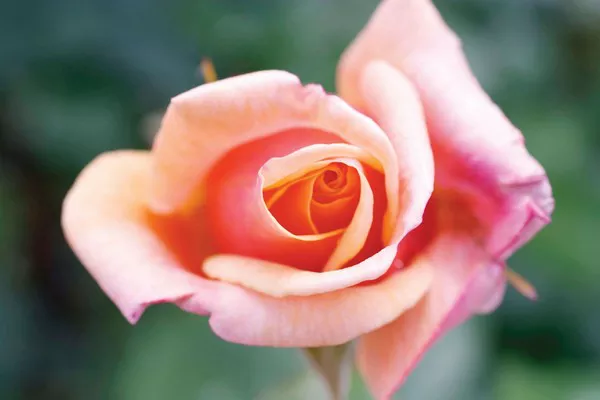Hydroponics has revolutionized the way we cultivate plants, offering a sustainable and efficient approach to agriculture. While it’s often associated with growing fruits and vegetables, hydroponic systems can also be a remarkable method for nurturing the vibrant world of flowers. In this article, we’ll explore the fascinating realm of flowers that can flourish hydroponically, emphasizing the diverse selection of blooms and the benefits of this unique cultivation method.
The Art of Growing Flowers Hydroponically
Growing flowers hydroponically is a captivating fusion of art and science. It allows you to nurture delicate petals and lush foliage without the constraints of traditional soil-based gardening. This method involves cultivating flowers in a nutrient-rich water solution, providing them with all the essential elements for growth. By harnessing hydroponic technology, you can achieve healthier, more vibrant flowers that captivate the senses with their beauty and fragrance.
Popular Flowers for Hydroponic Growth
1. Roses
One of the most iconic flowers globally, roses, can be successfully grown hydroponically. Hydroponic systems ensure a consistent supply of nutrients and water to these elegant blooms, resulting in healthier plants. With meticulous care, hydroponically grown roses can display exceptional vibrancy and longevity, making them ideal for special occasions or as a cherished centerpiece in your home.
2. Tulips
Tulips, often associated with the Netherlands, are another flower that thrives in hydroponic environments. Hydroponically grown tulips exhibit remarkable color saturation and uniform growth. This makes them an excellent choice for florists and enthusiasts who appreciate the precision and beauty of these classic blooms.
3. Orchids
Orchids are renowned for their exotic beauty and allure. Growing orchids hydroponically offers better control over their delicate requirements, such as humidity and nutrients. As a result, hydroponically cultivated orchids boast vibrant colors and unique shapes, making them a favorite among flower enthusiasts and collectors.
4. Lilies
Lilies, with their graceful appearance and captivating fragrance, can also be cultivated hydroponically. Hydroponic systems provide lilies with the ideal conditions for their growth, leading to more robust plants and a prolonged flowering season. This versatility makes lilies an excellent choice for hydroponic flower growers.
Why Choose Hydroponics for Flower Cultivation
1. Precise Nutrient Management
Hydroponics allows for precise control over the nutrient composition in the water solution, ensuring that flowers receive the ideal blend of essential elements. This fine-tuned approach promotes healthier root systems and overall plant vitality, resulting in more robust and beautiful flowers.
2. Water Efficiency
Water conservation is a growing concern in agriculture. Hydroponics uses water more efficiently compared to traditional soil-based gardening. By reducing water waste, hydroponic flower cultivation not only benefits the environment but also lowers water-related costs.
3. Year-Round Blooms
Hydroponic flower systems can be set up indoors, allowing for year-round flower production. This means you can enjoy your favorite blooms regardless of the season. Moreover, controlled indoor environments offer protection from adverse weather conditions and pests.
4. Space Optimization
Hydroponic flower systems can be tailored to fit various spaces, making them suitable for urban gardeners and those with limited outdoor areas. Vertical hydroponic setups are especially space-efficient, allowing you to maximize your flower cultivation even in tight quarters.
Hydroponic Flower Cultivation Tips
1. Selecting the Right Hydroponic System
Choosing the appropriate hydroponic system is crucial for successful flower cultivation. Systems such as Deep Water Culture (DWC) and Nutrient Film Technique (NFT) work well for most flowers. Research and consider your specific flower’s needs when selecting a system.
2. Nutrient Formulation
Carefully formulate the nutrient solution to match your flower’s requirements. Many hydroponic nutrient blends are available, each designed for specific growth stages. Regularly monitor pH levels and nutrient strength to ensure optimal conditions.
3. Lighting Considerations
Proper lighting is essential for hydroponic flower growth, especially in indoor setups. LED grow lights are energy-efficient and can be adjusted to mimic natural sunlight. Tailor the light spectrum and intensity to the flowering stage of your chosen flowers.
4. Temperature and Humidity Control
Maintain stable temperature and humidity levels in your hydroponic environment. Flowers have specific temperature and humidity preferences that, when met, can enhance their growth and flowering.
Conclusion
The realm of flowers grown hydroponically is as diverse as it is captivating. From roses to orchids, lilies to tulips, the beauty of hydroponic flower cultivation knows no bounds. With precise nutrient management, water efficiency, year-round blooming, and space optimization, hydroponics offers a promising future for flower enthusiasts and commercial flower production alike.
As you embark on your hydroponic flower-growing journey, remember to select the right system, formulate nutrient solutions carefully, provide proper lighting, and maintain optimal environmental conditions. By doing so, you’ll be well on your way to nurturing the most exquisite and vibrant blooms imaginable.
So, whether you’re a seasoned horticulturist or a budding green thumb, consider the endless possibilities that hydroponic flower cultivation offers. Explore this innovative world of floral beauty and unlock the potential to grow stunning flowers hydroponically, redefining the way we appreciate nature’s masterpieces.


